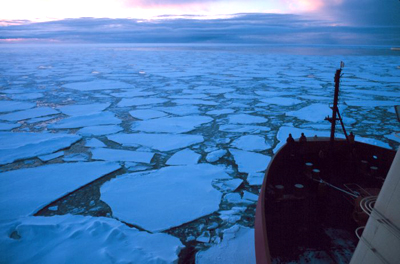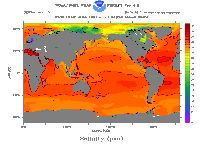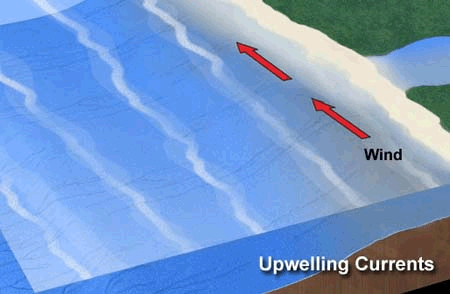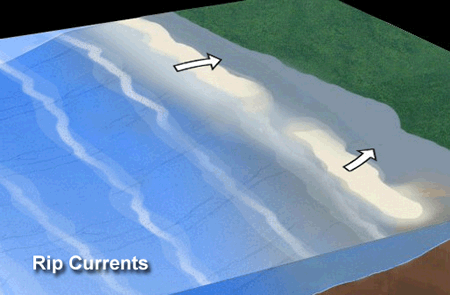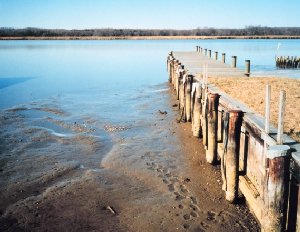Click on image for full size
Courtesy of UCAR
Related links:
Coral Reefs in a Changing World
Rock Eating Bacteria Found at the Bottom of the Sea
Acid Rain Has Greater Impact on Coastal Ocean Waters
Earthquakes Under Pacific Ocean Floor Reveal Unexpected Circulation System
Exploring Density with Salt and Fresh Water: Par 5
Thermal Expansion and Sea Level Rise
Ducks in the Flow: Ocean Education Resources
Exploring Ocean Dead Zones video
Earth's Ocean
Earth's ocean covers more than 70% of our planet's surface. There are five major ocean basins: the Pacific, the Atlantic, the Indian Ocean, the Arctic Ocean, and the Southern Ocean that surrounds Antarctica.
Seawater is salty. Anyone who has taken a gulp of water while swimming in the ocean knows that. The saltiness of the water is called salinity. Salt is dissolved in the seawater. There are other minerals and gases dissolved in seawater too.
Ocean water is always moving. It moves around surface ocean currents in the top part of the ocean. It also moves from the deep ocean to shallow areas by upwelling and moves back to the deep ocean by downwelling. Currents along coastlines move water too. Each day ocean water moves with the tides, shifting where the water meets the shore.
Over a long time water moves from the deep ocean to shallow ocean and back again to the deep in the global ocean conveyor. As Earth’s climate warms this pattern might change.
The height of the ocean surface is called sea level. Over a long time, sea level can change for a number of reasons. Today sea level is rising because Earth’s climate is getting warmer.
Coral reefs are affected as the ocean changes because of global warming, pollution, and other changes. The ocean is becoming more acidic, which is harmful to corals and other marine life.







